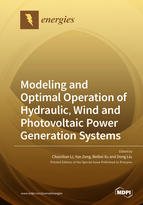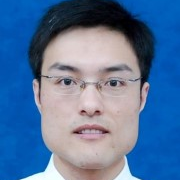Modeling and Optimal Operation of Hydraulic, Wind and Photovoltaic Power Generation Systems
A special issue of Energies (ISSN 1996-1073). This special issue belongs to the section "A: Sustainable Energy".
Deadline for manuscript submissions: closed (31 July 2022) | Viewed by 16432
Special Issue Editors
Interests: modeling; simulation and optimal control of hydropower; wind and photovoltaic power generation systems; power generation equipment status monitoring; fault diagnosis and health management; new energy power system dispatch; microgrid energy management and control; big data; deep learning and artificial intelligence application research
Interests: the control of hydro turbine generating units control and nonlinear control theory application
Interests: wind/solar/pumped storage system; hybrid energy systems; load flexibility; risk assessment; optimizes power supply
Special Issues, Collections and Topics in MDPI journals
Interests: refined modeling; stability analysis; adaptive control; optimal operation and fault diagnosis of hydro-turbine regulation system for conventional hydropower station or pumped storage station
Special Issue Information
Dear Colleagues,
The modeling and optimal control of renewable energy sources such as hydraulic, wind and photovoltaic, which play an increasing role in modern power systems, are of great importance for safe and stable system operation. Renewable energy systems are a class of complex nonlinear systems with a random and intermittent nature, time-varying parameter characteristics, and non-minimum phase characteristics. Traditional models are far from accurate in describing complex systems and have no advantage in large-scale energy optimization design, so it is crucial to establish higher-accuracy renewable energy system models for mechanism and application research. At the same time, due to the coupling of several physical factors in energy systems, a combination of multiple modeling approaches is required to realize multi-field coupled simulation, which is, undoubtedly, a great challenge. On the other hand, the complexity and variability of the structure and composition of power systems make the operating conditions and production environment for renewable energy generation systems subject to many uncertainties, and the traditional PID control strategy has been difficult to adapt to this new normal. Therefore, it is time to innovate the control mode of renewable energy units to make the regulation more intelligent, efficient and reliable, which is also an important guarantee of whether renewable energy generation systems can replace traditional energy on a large scale in the future.
This Special Issue aims to present and disseminate the most recent advances related to the theory and/or application research on the modeling and optimal operation of hydraulic, wind and photovoltaic power generation systems. All submissions within the scope of the listed keywords are welcome.
The topics of interest for publication include, but are not limited to, the keywords below.
Prof. Dr. Chaoshun Li
Prof. Dr. Yun Zeng
Dr. Beibei Xu
Dr. Dong Liu
Guest Editors
Manuscript Submission Information
Manuscripts should be submitted online at www.mdpi.com by registering and logging in to this website. Once you are registered, click here to go to the submission form. Manuscripts can be submitted until the deadline. All submissions that pass pre-check are peer-reviewed. Accepted papers will be published continuously in the journal (as soon as accepted) and will be listed together on the special issue website. Research articles, review articles as well as short communications are invited. For planned papers, a title and short abstract (about 100 words) can be sent to the Editorial Office for announcement on this website.
Submitted manuscripts should not have been published previously, nor be under consideration for publication elsewhere (except conference proceedings papers). All manuscripts are thoroughly refereed through a single-blind peer-review process. A guide for authors and other relevant information for submission of manuscripts is available on the Instructions for Authors page. Energies is an international peer-reviewed open access semimonthly journal published by MDPI.
Please visit the Instructions for Authors page before submitting a manuscript. The Article Processing Charge (APC) for publication in this open access journal is 2600 CHF (Swiss Francs). Submitted papers should be well formatted and use good English. Authors may use MDPI's English editing service prior to publication or during author revisions.
Keywords
- hydraulic power generation system
- solar power generation system
- photovoltaic power generation system
- system integration
- refined modeling
- optimal operation
- advanced/intelligent control
- cooperative control
- performance evaluation
- scheduling and planning
- fault forecasting/diagnosis
- CFD simulation
- 1D–3D coupling simulation
- multi-energy complementary
- stability analysis
- 100% renewable power system
- smart microgrid









